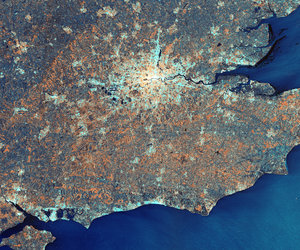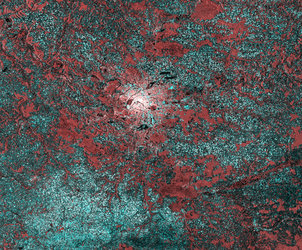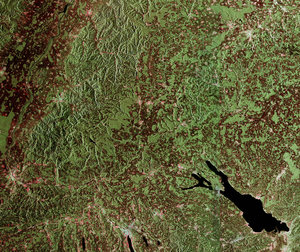Sweden signs up for Sentinel data
With the second Copernicus-dedicated Sentinel satellite less than two weeks away from launch, ESA and Sweden have signed an arrangement on managing and accessing Sentinel data.
The Sentinel family of satellites is being developed to meet the operational needs of Europe’s environment monitoring programme, Copernicus. Following the launch of Sentinel-1A in April 2014, the next in the series of satellites, Sentinel-2A, is scheduled for launch on 23 June.
The Sentinel-2 mission will provide ‘colour vision’ for Copernicus, with data being used to monitor plant health, changing lands, inland water bodies and the coastal environment, and support disaster mapping.
Data from the Sentinel satellites and contributing missions to Copernicus are freely accessible for Copernicus Services, as well as to scientific and other users.
At an event held today at ESA’s headquarters in Paris, France, ESA and Sweden signed an Understanding for the Sentinel Collaborative Ground Segment Cooperation, which aims to facilitate Sentinel data exploitation in the country.
Signing on Sweden’s behalf was Olle Norberg, Director General of the Swedish National Space Board (SNSB).

Under the agreement, SNSB will coordinate ground segment activities in Sweden – such as hosting, distributing, ensuring access and archiving Sentinel data – and act as an interface between ESA and national initiatives.
“This is the very beginning. Sweden is very excited to become an even stronger user of Sentinel data through the signature of this agreement,” said Dr Norberg.
As coordinator of the Copernicus ‘space component’, ESA supports national initiatives by establishing direct and efficient access to Sentinel data, providing technical advice on the setting up of data acquisition and dissemination, as well as making data processing and archiving software available to national initiatives.
A total of eight Participating States have now signed the agreement: Greece, Norway, Italy, Finland, Germany, France, the UK and Sweden.
“Each national collaborative ground segment is a multiplier for Copernicus utilisation based on specific national requirements,” said Volker Liebig, Director of ESA’s Earth Observation Programmes and co-signatory of the Understanding.
“In addition, it strengthens the robustness of the net-based Copernicus ground segment by delivering additional access paths for the constantly growing number of users.”









